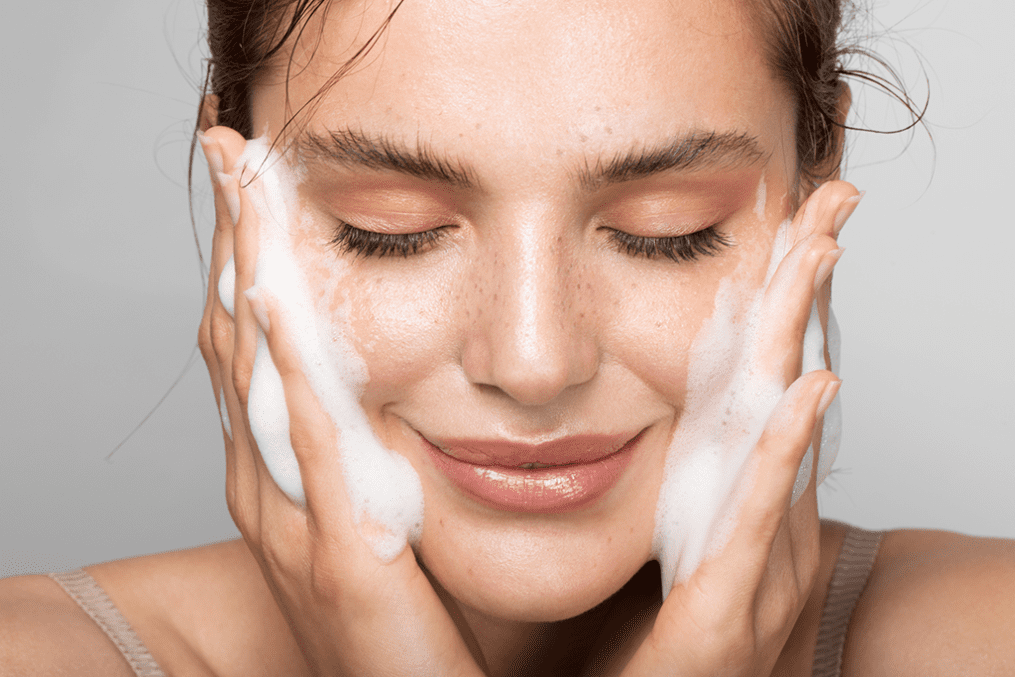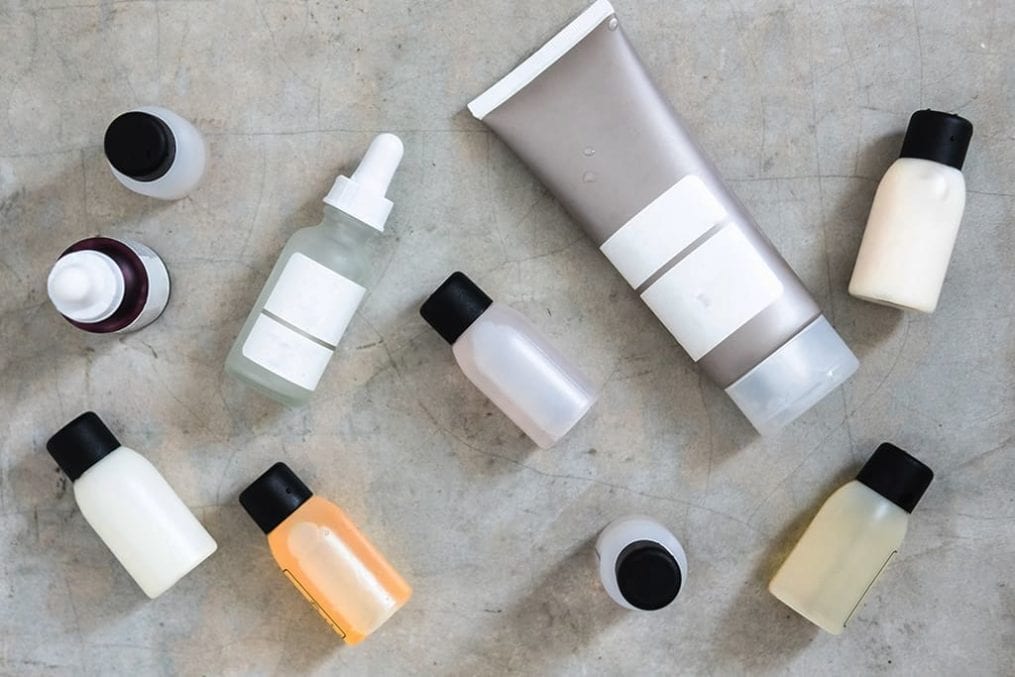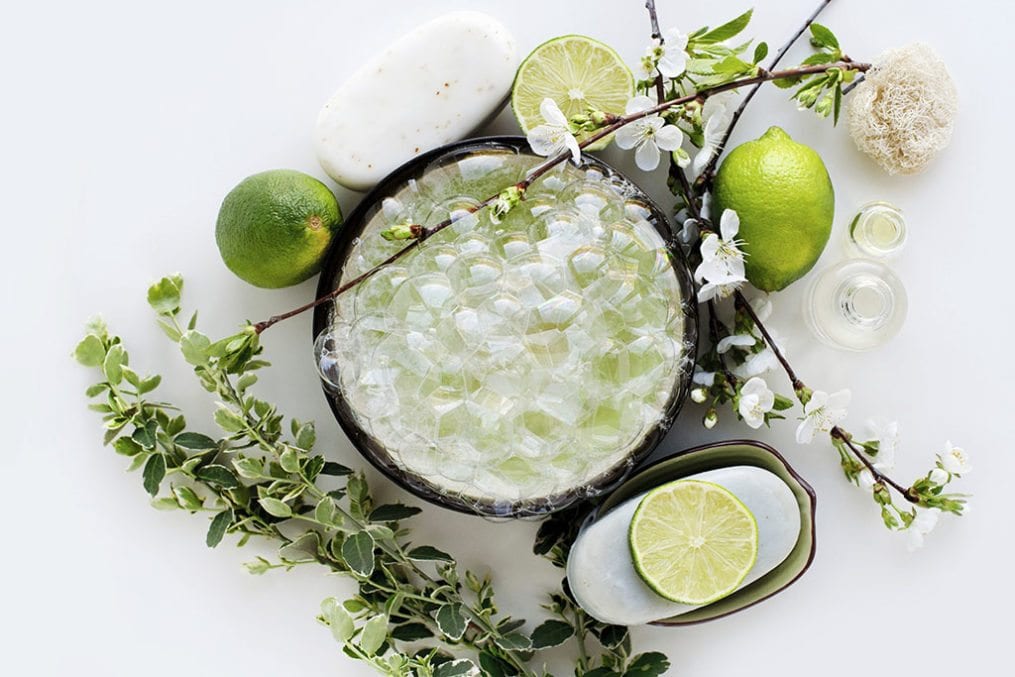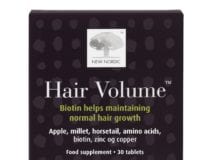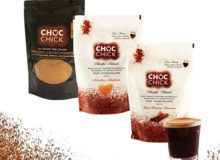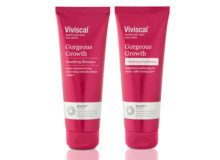What is farm to face beauty?

Following in the footsteps of field-to-fork – the culinary movement where consumer consciousness has driven greater transparency about the origins of our food – clean beauty brands are putting ingredient provenance front and centre, removing the middle man and growing their own.
‘Transparency in the food industry has led to a similar demand in the beauty industry,’ explains organic skincare expert Dr Pauline Hili. ‘Customers are wanting to know more about where ingredients come from, how they’re extracted and how they’ll perform on their skin.’
Tata Harper has arguably become a poster girl for the movement, tending 1200 acres of organic farmland in Vermont, USA, where her luxury skincare is also mixed, batched and packaged. However, the irony is that some of our best-loved clean beauty brands have been farm-to-face right from the outset.
In Ilkeston, Derbyshire, farmers cultivate fields of vivid orange calendula, grown especially for Weleda’s tinctures, soaps and lotions. ‘For us, this isn’t a trend – it’s our way of life and has been for almost one hundred years,’ explains Jayn Sterland, Weleda’s managing director in the UK. ‘We manage approximately 248 square kilometres worldwide organically and grow most of the plants we use through our own herb farms, or through collaboration with farming partners across the globe.’
Creating a more sustainable future
Owning the process means slick, waste-free production with efficient recycling in place. ‘At Weleda, we operate a closed supply chain,’ says Sterland. ‘If you’re the one in control of your processes, you’re not at the mercy of market fluctuations, whether caused by climate, war or economic manipulation. This allows you to maintain and foster true sustainability.’
It’s not only about ingredients. Working closely with local farmers, Natura Siberica’s 16 hectares of organic farm are planted with 14 species of rare Siberian herbs, including snow cladonia, an active extract of which features in their anti-ageing skincare. ‘When you buy our products, you’re not just investing in your own healthy skin and hair, you’re also helping to support and sustain livelihoods of indigenous people in Siberia,’ says Jessica Smith, UK brand manager.
Why less is more
It’s clear that this is part of a much wider trend. According to the Soil Association, sales in organic health and beauty products increased by over 20% in 2017 and the popularity of clean beauty shows no signs of waning. ‘Growing health concerns over synthetic chemicals are turning consumers away from mass-produced, over-processed cosmetics and instead towards fresh, small-batch concoctions,’ confirms Victoria Buchanan, senior futures analyst at the Future Laboratory.
Perhaps most important of all is the question of efficacy. Do farm-to-face products actually perform better? Many favour biodynamic growing methods – a kind of ‘super-organic’ way of farming – in the belief it improves soil quality and increases ingredient potency.
‘Organic and biodynamic methods are the gold standard of phytonutrient density from a crop,’ says Chase Polan, founder of holistic luxury skincare brand KYPRIS. ‘Yet, not every ingredient is available organically or biodynamically grown – especially when they are wild-crafted.’ Smith agrees: ‘Herbs which have grown uncultivated have undergone natural selection – only the most resilient, strong, nutrient-rich plants survive.’
Beauty by-products
Despite all of the above, what qualifies a brand as farm-to-face can differ wildly. ‘Like other terms that get tossed out there – natural or clean – it can mean different things to different people,’ says Polan. ‘With food, this literally means that ingredients are grown locally, brought into the kitchen, and prepared to be eaten. In cosmetics, there are so many other factors involved in producing ethically and sustainably sourced skincare while honouring the ingredients and their provenance.’ Traditionally, it refers to brands who control their entire supply chain – from seed to serum – but these days it also encompasses brands using food by-products like UpCircle, whose sustainable skincare is made with repurposed coffee grounds sourced from indie coffee shops across London.
‘One third of all food produced is wasted. It is one of the most wasteful industries in the world, meaning that it gives companies like us a huge number of ingredients from which to do better things with,’ explains UpCircle co-founder Will Brightman. ‘Food ingredients can have powerful effects on the body, inside and out – so there’s an opportunity for us to create clean beauty products from ingredients that were being discarded and yet still had a huge amount to offer the skin.’
Small packages
One thing farm to face isn’t is mass production. Small batch ensures optimal freshness. ‘Our farmers hand-pick the plants at the optimum stage in their growth to ensure their active qualities are maximised,’ says Smith. ‘It’s vital the flowers and plants are processed immediately as the later they are extracted, the more the essential oils and waters lose potency.’
Being able to trace a product’s journey is equally important. ‘Farm-to-face requires a trace from source to consumer. Some of the technology available such as blockchain – software that stores records across a shared network – are making full traceability very simple,’ says Dr Hili. One thing’s for sure, we’ve never been so engaged with where our products come from. ‘Educating consumers allows them to make choices that support their values. And they’ll keep on demanding higher standards from manufacturers.’
Read more: How to adopt a zero waste beauty regime


